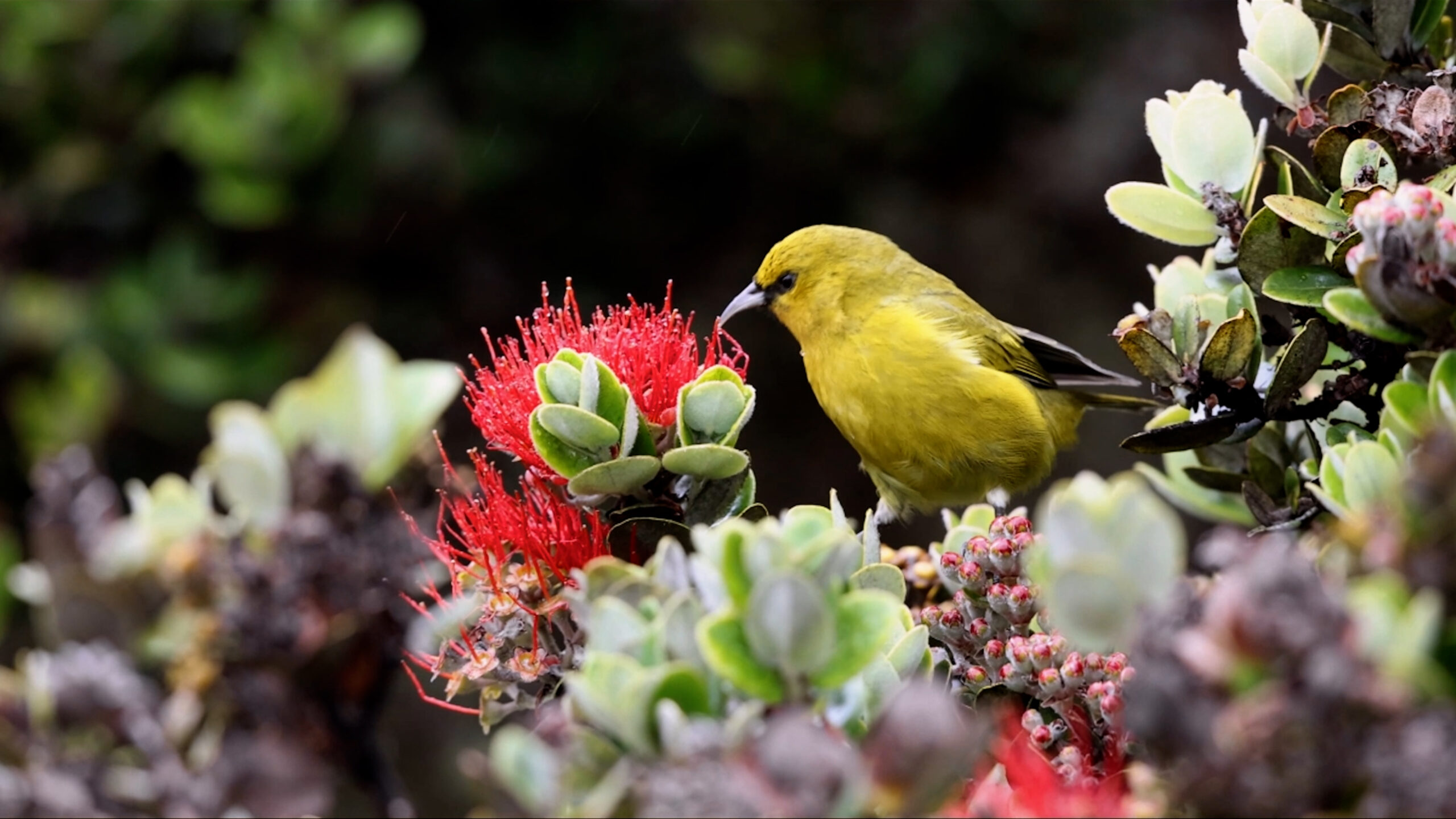When a single ancestor species rapidly evolves into many different, specialized species, this is known as adaptive radiation. Typically, adaptive radiation occurs when a new niche becomes available in an environment, or a species arrives at a new location with little local competition — like a recently formed island.
The most famous example of adaptive radiation is the Galapagos finches, also known as “Darwin’s finches,” which had different beak shapes and sizes depending on their island or habitat. But an even more dramatic example took place about 4500 miles northeast of the Galapagos, in Hawaii. There, a single species of rosefinch found its way to the lush islands and diversified into more than fifty different species, known as Hawaiian honeycreepers. They have an even more dramatic array of beak shapes and sizes, feather colors, and food preferences. Unfortunately, honeycreepers are also an example of how vulnerable highly specialized species can be when exposed to threats like invasive species and habitat loss. Learn more about their story in the Wild Hope episode Birds on the Brink.
